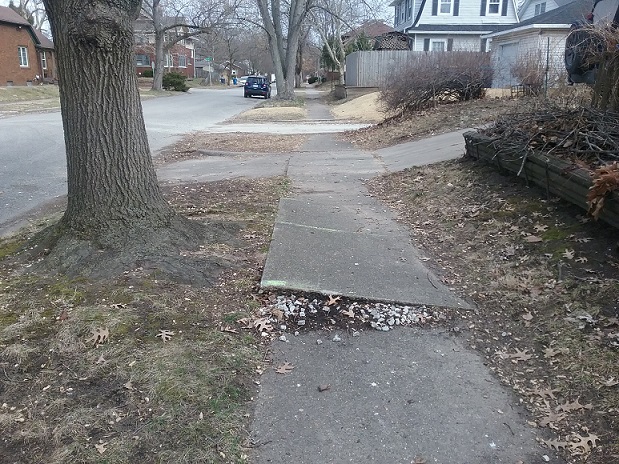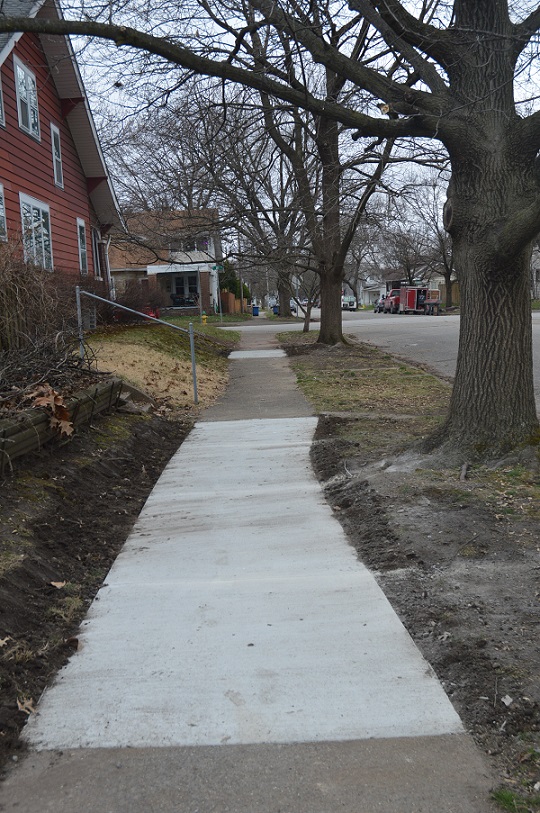A much-loved tree on my property was pushing up part of the city sidewalk, creating a hazard for walkers.

I was concerned because city contractors use a chainsaw to cut deeply into the offending tree roots, thereby injuring or killing the tree. This a problem across America, with the public complaining about widespread tree death following sidewalk repair. Numerous websites describe this issue, including:
Sidewalk and Roots: Mitigating the Conflict—An Overview
After several tries, I found a concrete contractor who was willing to curve the sidewalk up over the roots or around them. Here is the crooked sidewalk after repair:

The contractors were creative, and quickly improvised a new shape for the sidewalk, going around the large roots of the tree. It is level, but not square. It is straight along one side, but crooked or rounded on the other side. The next door neighbor describes it as a sidewalk “with character”. In hindsight, I would have made the curve more pronounced and given the tree more room to grow. The New York City website, Trees & Sidewalks Program, has some good examples and advice for homeowners in how to create a new sidewalk around a tree.
So the question is: Do we really need perfectly square, perfectly straight sidewalks, or can we live with a slightly crooked sidewalk, safe for walking but also protective of trees in the tree row? In my case, a broken sidewalk was replaced with a crooked sidewalk, in order to save a healthy young oak tree. The sidewalk is now a bit quirky, with its own unique shape and beauty. Hopefully, others will follow this example and save their trees from damage or death.